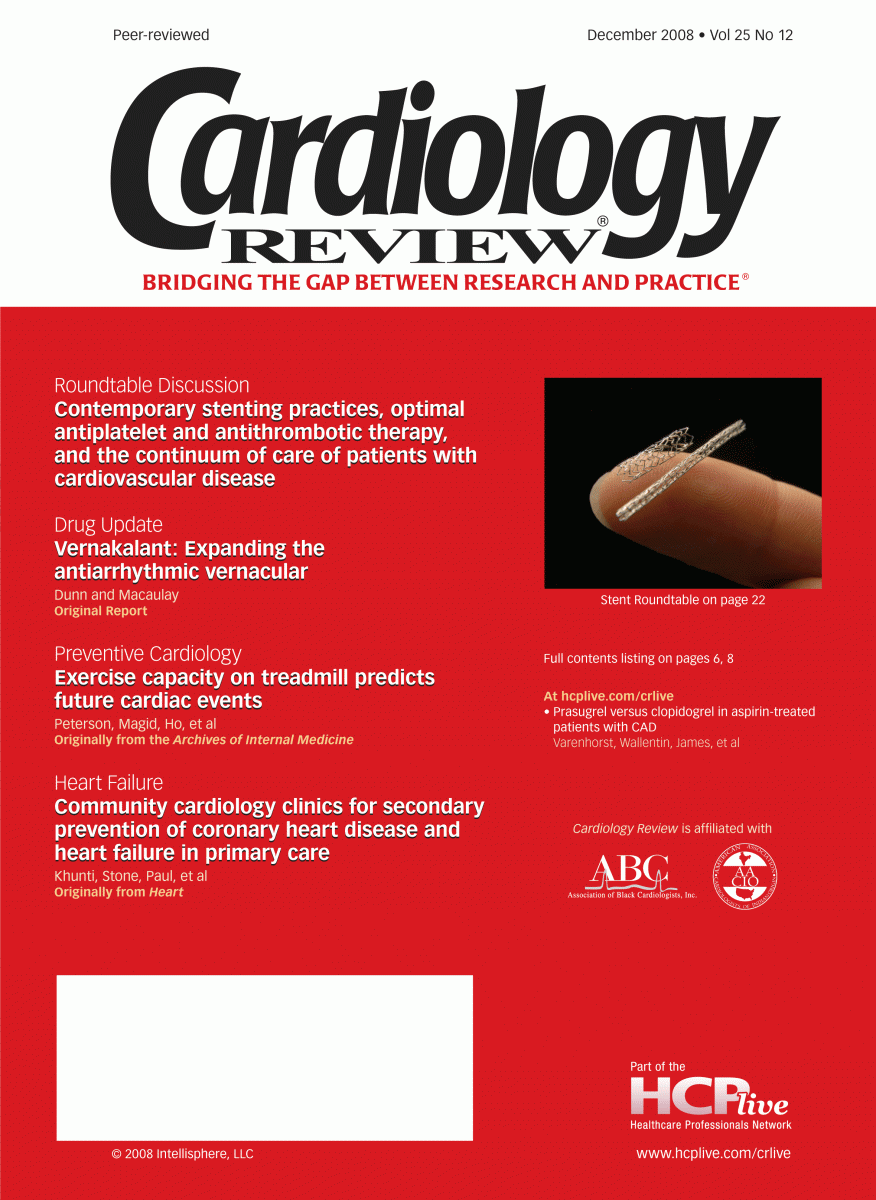Community cardiology clinics improve quality of life but reimbursement system favors procedures over prevention
Chronic heart failure and coronary heart disease are chronic conditions that are frequently encountered in primary care and are often inadequately diagnosed and managed.
Chronic heart failure and coronary heart disease are chronic conditions that are frequently encountered in primary care and are often inadequately diagnosed and managed. Despite their most earnest efforts, busy health care providers simply do not have the time to optimize heart failure management. Although great advances in medical management of chronic heart failure have been made over the past 20 years, they have fallen far short of reaching their full potential, owing heavily to the reimbursement system that still favors procedures above medical management and prevention. This short-sighted approach, while sometimes dictated by necessity, has resulted in many patients receiving urgent and emergent treatment of many diseases in emergency departments and inpatient wards. The expense of such an approach is high and represents a sizable drain on our health care budget.
The article by Khunti and colleagues is commendable because it provides a real-world analysis of the challenges that physicians face in identifying and treating heart failure patients. It is not surprising that the extra resources directed toward these patients resulted in better treatment, as these patients often require a very labor-intensive approach by health care providers. It is not uncommon for a heart failure patient to require careful but extensive diagnostic testing to evaluate for reversible causes of heart failure. Even in patients who initially benefit from surgical therapies (ie, bypass procedures, transplants, left ventricular assist devices), concomitant medical therapy is key to achieving long-term success. Many patients will also benefit from medical therapy alone, and this must be tailored to the patient’s overall condition. Medical management likely involves frequent office visits and near daily assessment of weight and blood pressure at home. Unfortunately, our present health care reimbursement system does not actively encourage this expenditure of labor through reimbursements that are commensurate with the required provider time, yet the proper management of such chronic disease states can have a profound public health benefit in terms of life expectancy, productivity, and quality of life.
In their study, Khunti and colleagues used a generic quality-of-life survey (SF-36),4 the Seattle Angina questionnaire, and the left ventricular dysfunction questionnaire (LVD-36). Quality of life is an increasingly reported measure in the scientific literature, without any known standards for such measure.1-3 The most widely used survey is the RAND-36 quality-of-life4 survey, which was not used in this study. In addition, unlike the primary and secondary outcomes of this trial, quality-of-life outcomes were not established a priori. The failure to report a predefined rationale for assessing quality of life is not new.3 Since clearly stated hypotheses about quality-of-life outcomes are lacking, differences between treatment groups may be exaggerated, making it difficult to interpret the results.5 This is a particularly important issue with multidimensional quality-of-life instruments because the chance of finding a difference when a true difference does not exist is increased by testing each domain or item for significance.
The overall results of Khunti and colleagues’ study are not particularly shocking, but they do reinforce the need for our health care system to support, through proper reimbursement, labor-intensive treatments for chronic diseases such as heart failure. While one can criticize parts of this study (choice of end points, choice of beta blocker, need for spironolactone, lack of specificity on exactly what the nurse practitioners were doing), the overall message is an extremely important one. The study adds to the growing body of evidence that supports the ability of nurse practitioners to improve patient outcomes through organized chronic disease management clinics. Heart failure disease management programs that include a nurse practitioner can improve the outcomes in this subset of patients. Our reimbursement system should encourage this approach, particularly in the current era when many of the most prescribed heart failure, ischemic heart disease, hypertension, and lipid medications have become generic and affordable to patients and the health care system as a whole.
